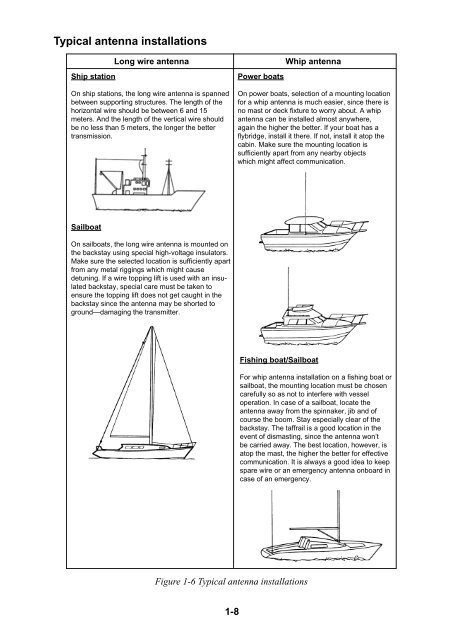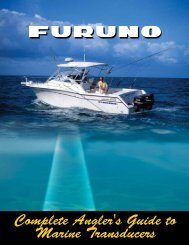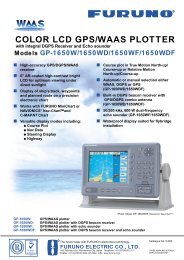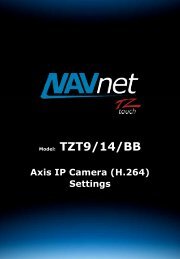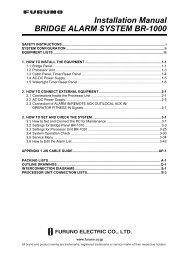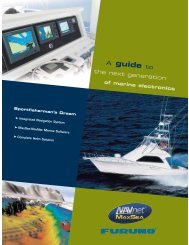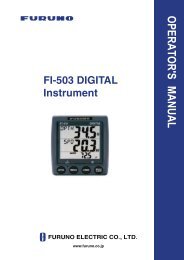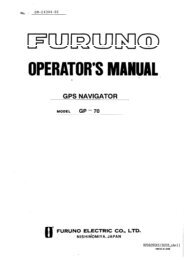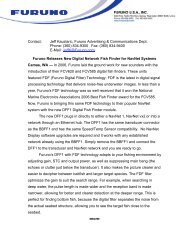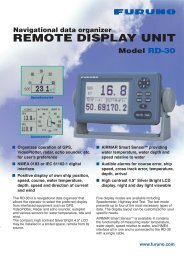FS1503 Installation Manual E (1855 KB) - Furuno USA
FS1503 Installation Manual E (1855 KB) - Furuno USA
FS1503 Installation Manual E (1855 KB) - Furuno USA
You also want an ePaper? Increase the reach of your titles
YUMPU automatically turns print PDFs into web optimized ePapers that Google loves.
Typical antenna installations<br />
Ship station<br />
On ship stations, the long wire antenna is spanned<br />
between supporting structures. The length of the<br />
horizontal wire should be between 6 and 15<br />
meters. And the length of the vertical wire should<br />
be no less than 5 meters, the longer the better<br />
transmission.<br />
Sailboat<br />
Long wire antenna Whip antenna<br />
On sailboats, the long wire antenna is mounted on<br />
the backstay using special high-voltage insulators.<br />
Make sure the selected location is sufficiently apart<br />
from any metal riggings which might cause<br />
detuning. If a wire topping lift is used with an insulated<br />
backstay, special care must be taken to<br />
ensure the topping lift does not get caught in the<br />
backstay since the antenna may be shorted to<br />
ground—damaging the transmitter.<br />
1-8<br />
Power boats<br />
Fishing boat/Sailboat<br />
Figure 1-6 Typical antenna installations<br />
On power boats, selection of a mounting location<br />
for a whip antenna is much easier, since there is<br />
no mast or deck fixture to worry about. A whip<br />
antenna can be installed almost anywhere,<br />
again the higher the better. If your boat has a<br />
flybridge, install it there. If not, install it atop the<br />
cabin. Make sure the mounting location is<br />
sufficiently apart from any nearby objects<br />
which might affect communication.<br />
For whip antenna installation on a fishing boat or<br />
sailboat, the mounting location must be chosen<br />
carefully so as not to interfere with vessel<br />
operation. In case of a sailboat, locate the<br />
antenna away from the spinnaker, jib and of<br />
course the boom. Stay especially clear of the<br />
backstay. The taffrail is a good location in the<br />
event of dismasting, since the antenna won’t<br />
be carried away. The best location, however, is<br />
atop the mast, the higher the better for effective<br />
communication. It is always a good idea to keep<br />
spare wire or an emergency antenna onboard in<br />
case of an emergency.


